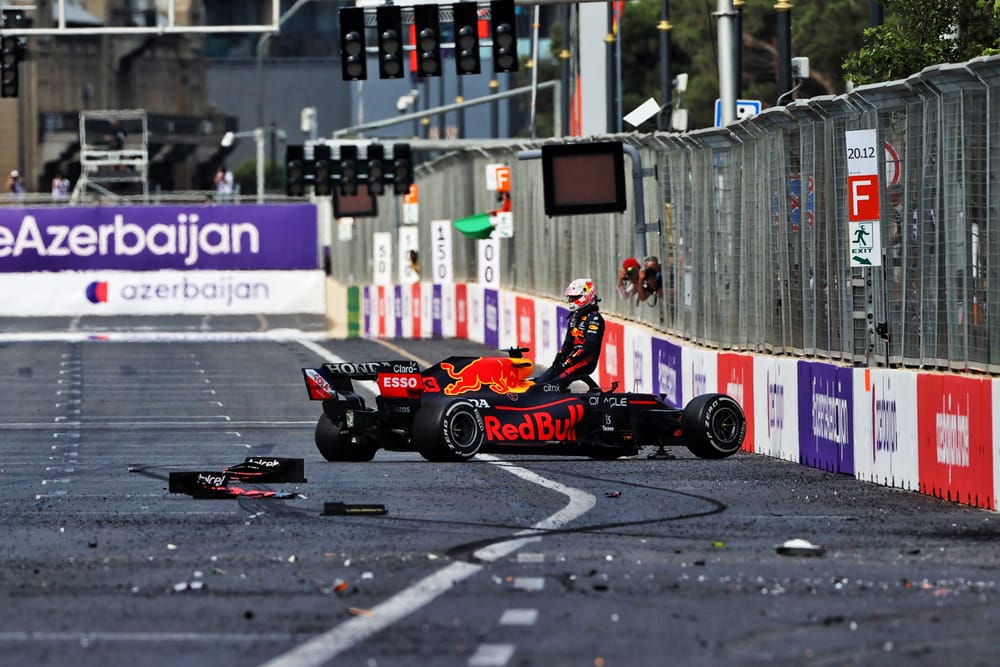Oscar Piastri’s place at the head of the 2025 F1 drivers’ championship has gone from pretty comfortable to pretty nerve-wracking over the three races since he left Zandvoort with the race winner’s trophy and a 34-point lead over McLaren team-mate Lando Norris.
A sandwich of McLaren team angst - that contentious post-pitstop team order at Monza and that controversial hit from Norris in Singapore - with a filling of a blunder-packed weekend in Azerbaijan has resulted in Norris slashing Piastri’s lead to 22 points heading to the next race in the United States.
But the most ominous looming shadow is reigning champion Max Verstappen, who has hacked a massive 41 points out of his gap to Piastri over those past three troubled races for the championship leader.
If Mercedes’ season had been more consistent, Singapore winner George Russell might even be giving Piastri another thing to worry about, given Russell’s recent points gain.
Considering how relentlessly strong Piastri’s form has been for most of this season, and the points cushion he still has over Verstappen in particular, he still goes into the final quarter of the championship as the title favourite - but not by anywhere near as much as you might’ve expected a month ago.
That said, Piastri is far from the first F1 title favourite to have a bit of a wobble - some of F1’s all-time best have done and got away with it.
2016: Rosberg rescues it
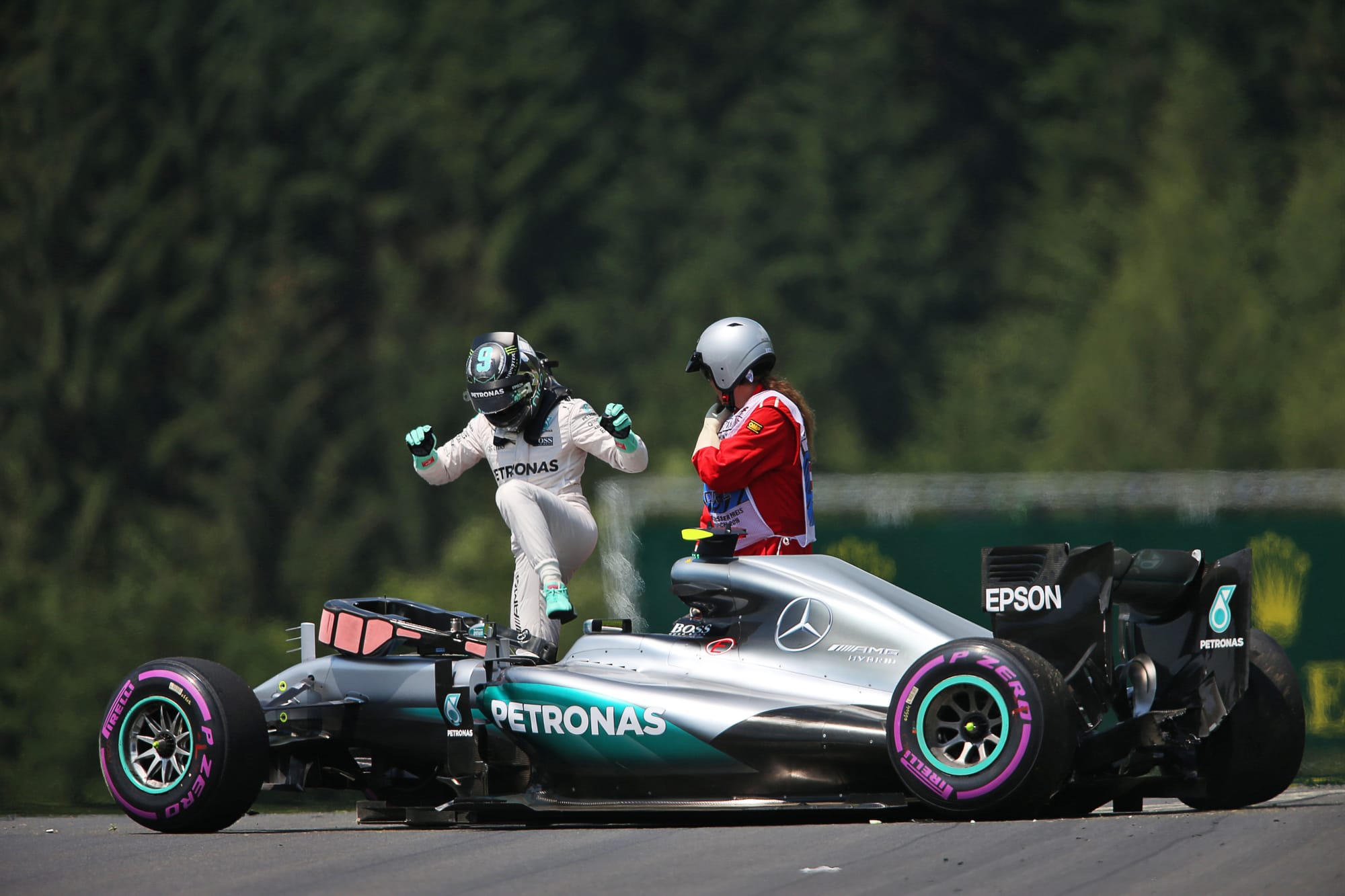
Lewis Hamilton had the beating of Mercedes team-mate Nico Rosberg during the first two years of the team’s hybrid era domination, with Hamilton’s 2015 title win particularly emphatic.
But when Rosberg ended up winning the first four races of 2016 while Hamilton’s opening rounds were blighted by poor starts, clashes and bad luck, suddenly Rosberg had a 43-point lead and a shot at the title.
However, Rosberg only won one of the next eight races. In fact he was only on the podium in three of them in 2016’s dominant car, as he clashed with Hamilton in Spain, slumped to seventh in a rain-hit Monaco Grand Prix, allowed himself to be forced off the road by Hamilton in Canada, clumsily collided with Hamilton on the final lap in Austria and was penalised for pushing Verstappen off the track in Germany.
Hamilton meanwhile, claimed victory in six of those eight races to eradicate all of Rosberg’s early-season hard work.
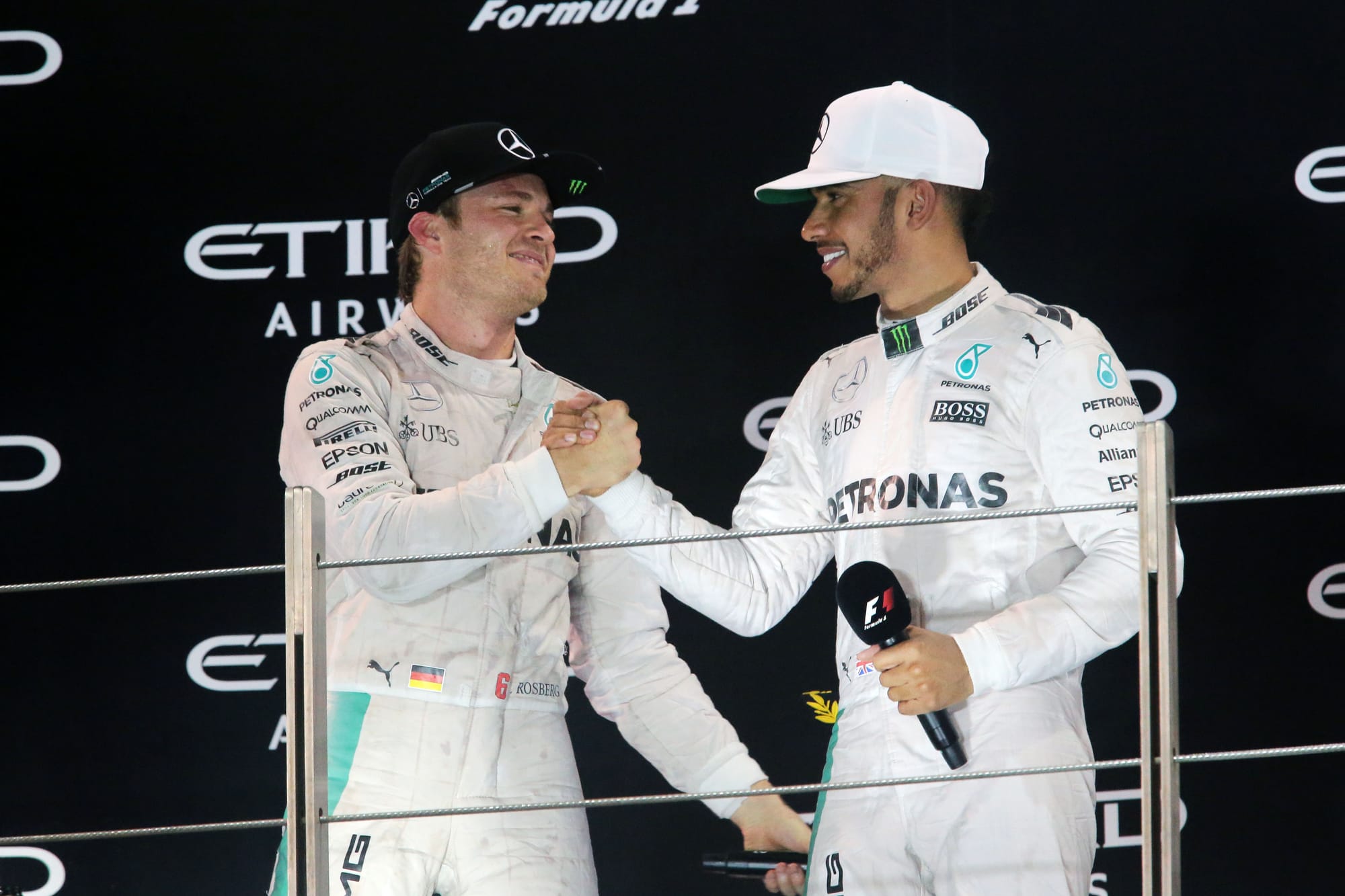
As F1 headed into summer break, it was Hamilton who now led the championship by 19 points, Rosberg having scored fewer points in those eight races than during the first four.
Everything pointed to Rosberg not being up to scratch to mount a proper title challenge, until his major wobble was arrested by a stunning second half of the season.
Four wins in five races from Rosberg and a crucial engine failure in Malaysia for Hamilton allowed Rosberg to play the percentage game in the final rounds to take an unlikely F1 title and a shock mic drop retirement.
1998 + 1999: Hakkinen makes heavy weather of it
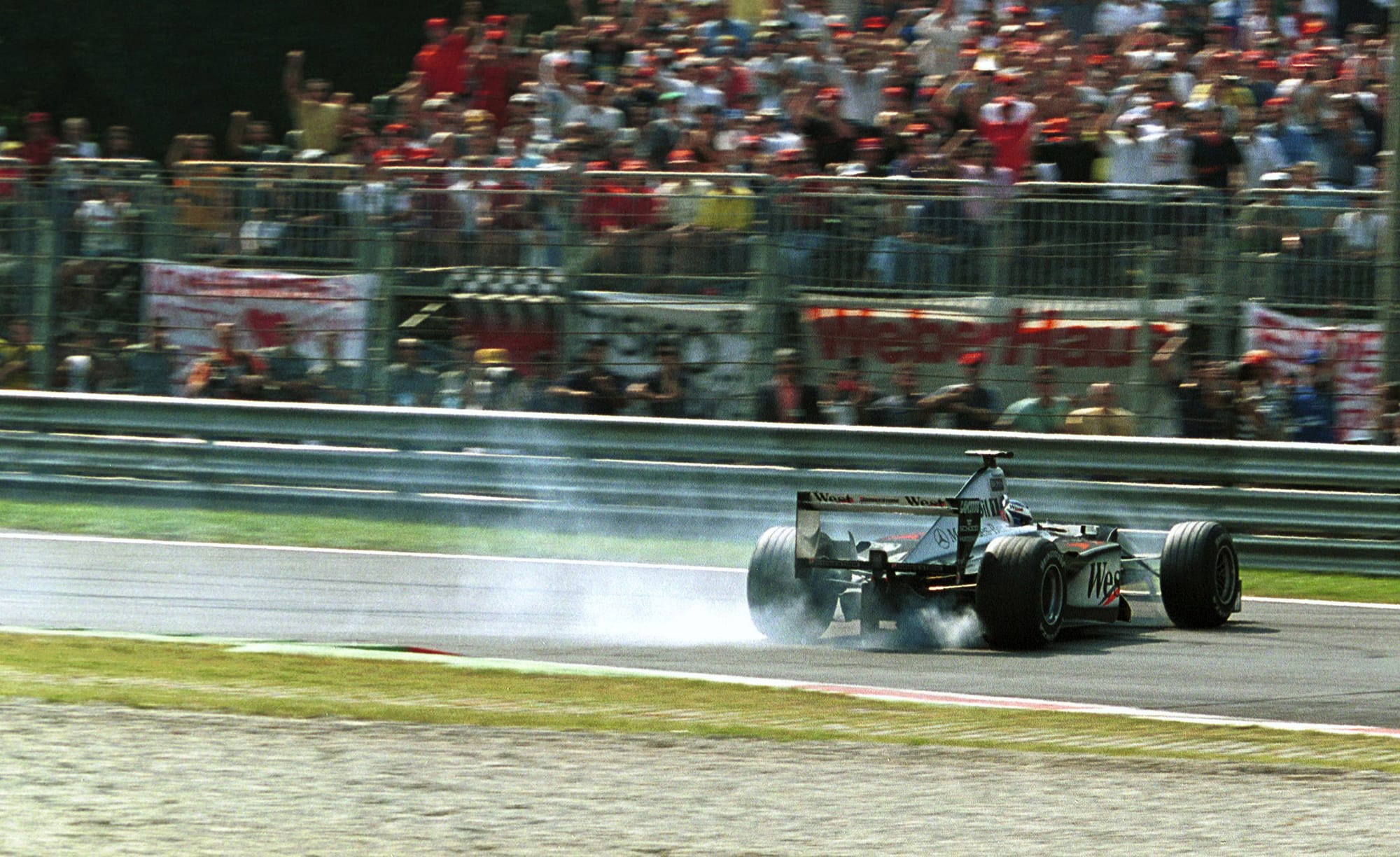
Both Mika Hakkinen’s F1 world championship wins became way more nerve-wracking than it looked like they’d need to be when he and McLaren were romping all over everyone with a massive raw pace advantage in the early stages of those seasons.
It was mainly McLaren’s technical fragility that initially let Michael Schumacher into the 1998 fight, but as Ferrari and in particular its tyre supplier Goodyear started making big development strides, Hakkinen was reeled in until they were level on points with two races left.
A brilliant win from behind at the Nurburgring steadied Hakkinen’s title bid even before Schumacher’s Suzuka stall and puncture settled it - and at least in 1998 Hakkinen himself hadn’t done much wrong.
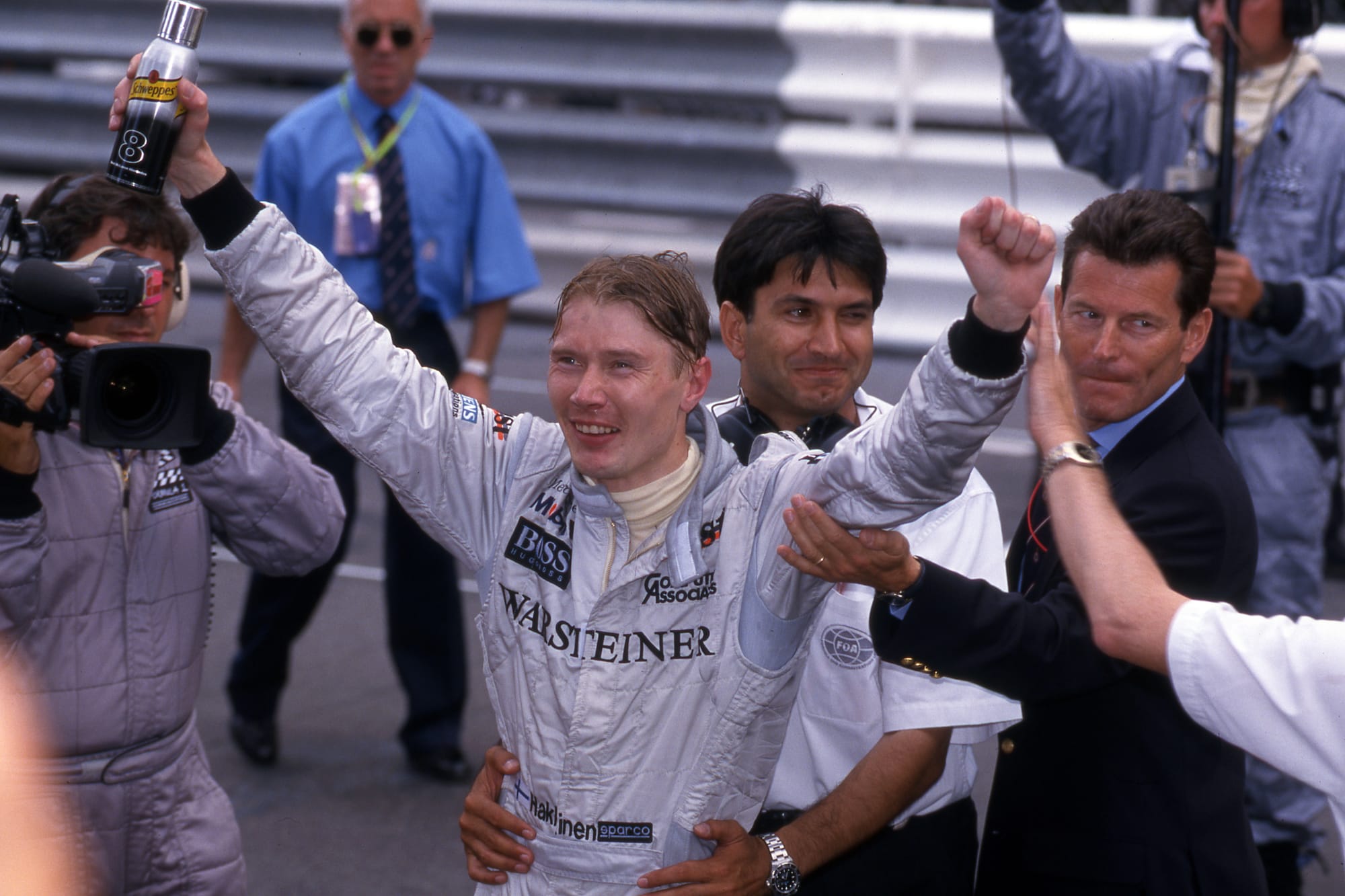
That wasn’t the case in his very sketchy 1999 - which also counts as the bigger wobble because he wasn’t even up against Schumacher.
Schumacher’s broken leg at Silverstone took him out of a title fight that had been quite tense up to that point but in which Hakkinen still looked favourite.
So with Schumacher gone, Mika could cruise to crown number two, surely?
No, somehow Hakkinen found himself scrapping frantically against Schumacher’s unheralded deputy Eddie Irvine, and also coming under pressure from both Coulthard and the wily wildcard package of Heinz-Harald Frentzen and Jordan.
A punt from Coulthard in Austria and a dramatic puncture in Germany were out of Hakkinen’s hands, but spinning tearfully out of the Italian Grand Prix lead wasn’t and he didn’t help himself with his handling of the Nurburgring weather either.
Hakkinen and McLaren dropped the ball so often that had Schumacher stayed fit or even Ferrari kept up its development pace in his absence then this would’ve surely been a title defeat.
As it was, despite Schumacher blitzing everyone on pace but handing Irvine the win on his return in Malaysia, Hakkinen’s commanding Suzuka performance meant he still got the championship over the line - just.
2000: Schumacher’s crazy summer
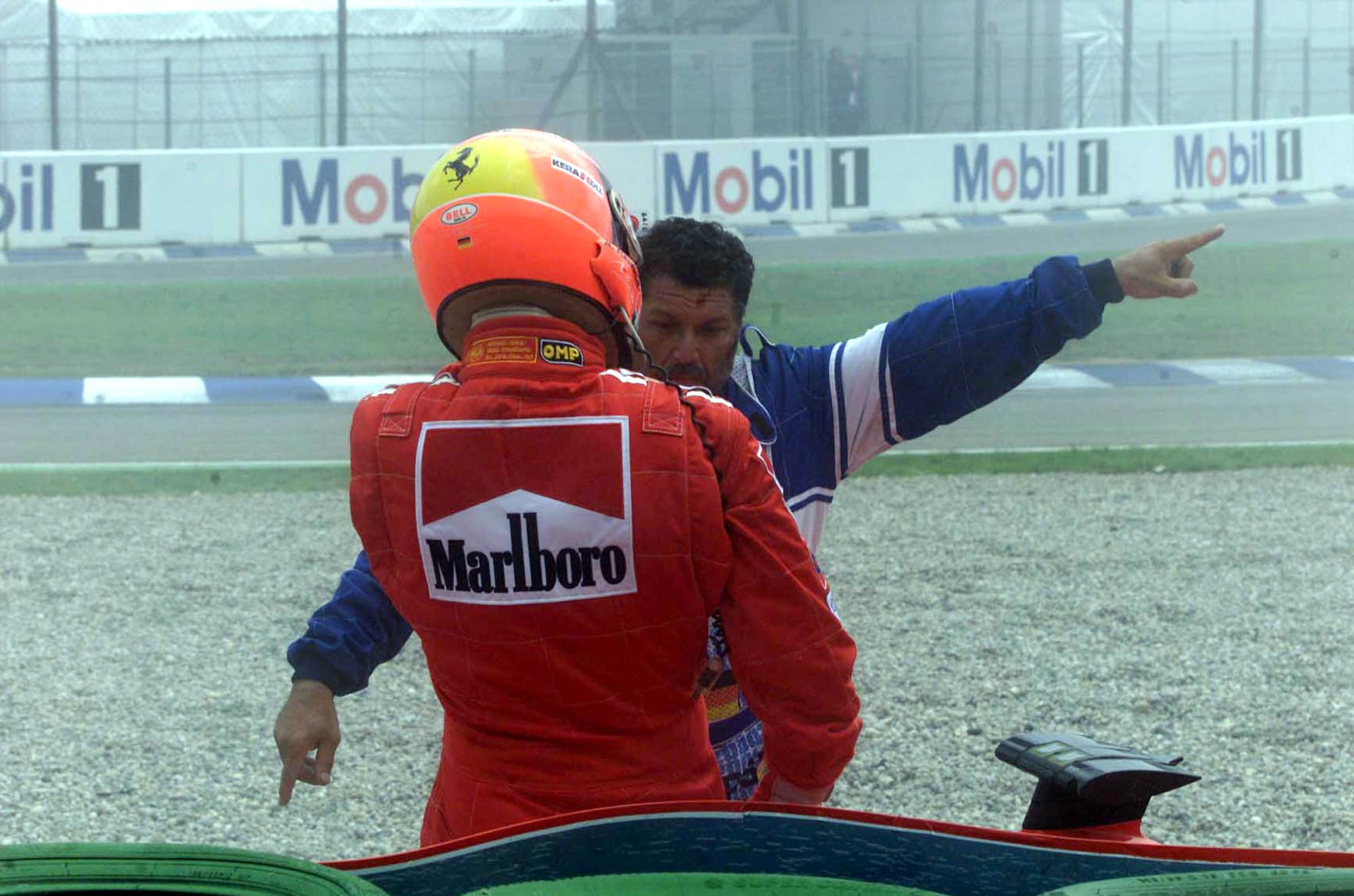
But Schumacher himself wasn’t immune to title fight wobbles either. You could see most of the 2003 season as a wobble amid Ferrari’s domination of the era, but we’re filing that year under ‘close title fight’ instead as there wasn’t a clear Schumacher mid-season stumble. Kimi Raikkonen’s relentless consistency meant Schumacher never did manage to do more than inch ahead.
The biggest points swing against Schumacher in one of his championship seasons was the dramatic loss of his enormous early-1994 points lead as he went from winning six of the first seven races and having more than twice as many points as anyone else to being tied with Hill going into the finale.
But it’s not really fair to characterise that as a wobble because disqualifications and bans played such a huge part, with Hill’s four game-changing wins coming on days when Schumacher either wasn’t there or was wiped from the results afterwards.
It was only in the Suzuka and Adelaide showdowns that Hill and Williams really got Schumacher on the ropes, but he got away with it in messy circumstances with their Australia collision.
So for a proper Schumacher title fight wobble, you have to look at 2000.
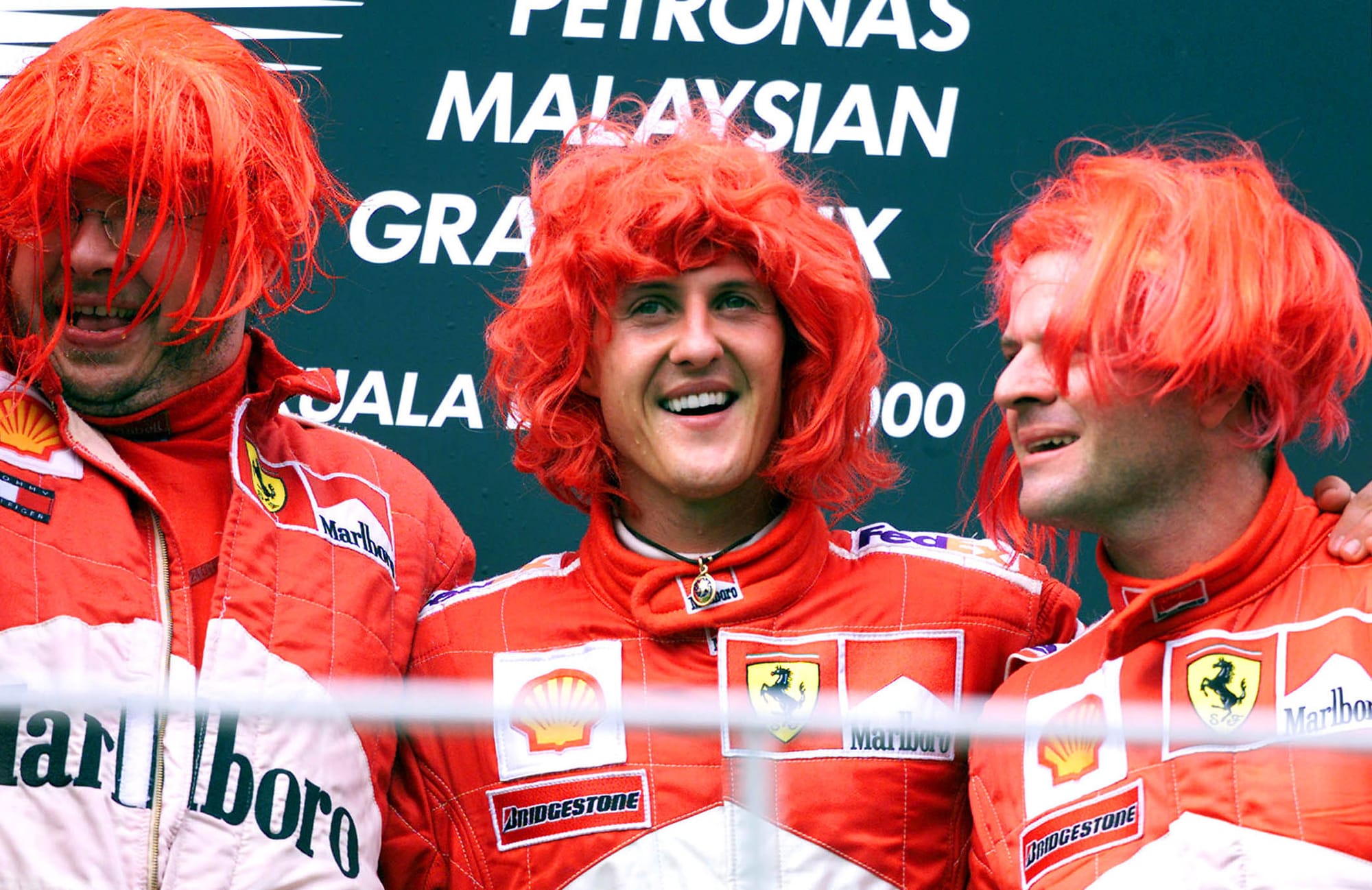
As he won the first three races, it looked like Schumacher was finally on course to end Ferrari’s two-decade drivers’ title drought after three seasons of near-misses. McLaren still generally had the faster package but it was less reliable and Hakkinen wasn’t at his best in the first half of the year.
Even with some costly pit chaos in Spain and melted suspension when leading in Monaco, Schumacher looked comfortable in the championship lead heading into the summer - but three straight zero scores changed that.
Engine failure just after losing the lead to Coulthard in France was followed by first-corner tangles in both Austria and Germany, then straight defeats to Hakkinen in Hungary and Belgium - the latter famous for Mika’s bold pass as they went either side of Ricardo Zonta.
Suddenly Schumacher’s points lead was gone. But Ferrari wasn’t going to be robbed again. Four Schumacher wins to round out the season, and a bit of help from another engine failure for Hakkinen at Indianapolis, meant this time there was no last-gasp heartbreak.
2024: Verstappen’s McLaren scare
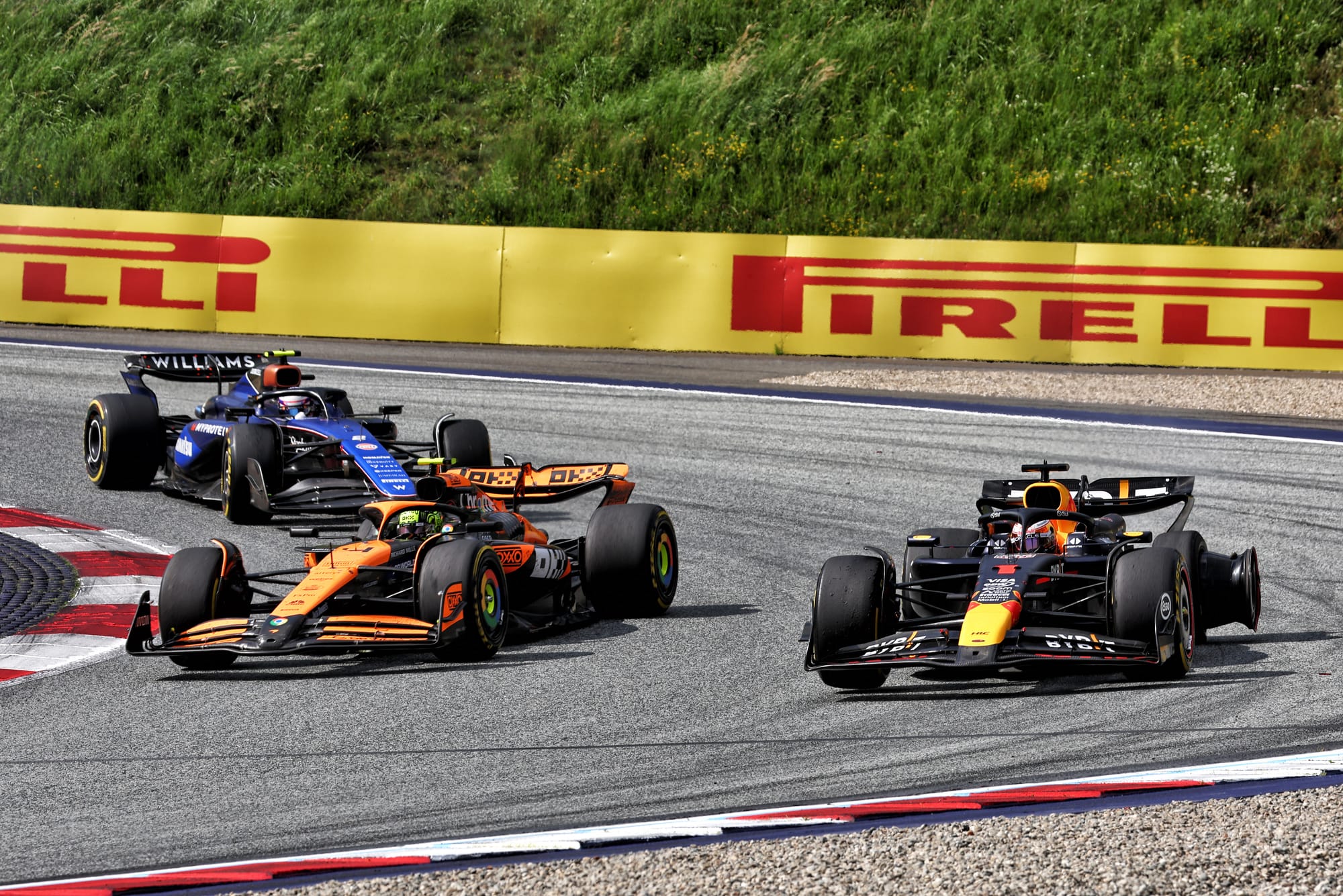
Having crushed the opposition in 2023 with arguably the most dominant F1 season by a single driver, Red Bull and Verstappen appeared to start 2024 in the same vein with four wins in the first five races.
But then McLaren unleashed a huge upgrade in Miami, a 10-part development package that transformed its car from third-best to a Red Bull-beater.
Norris won in Miami and McLaren should have done more damage thereafter, but Verstappen outfoxed Norris at a damp Canadian GP and clashed with him in Austria, where the red mist returned over Verstappen.
He was slapped with a 10-second penalty and we got the first sign since 2021 that he was feeling some title pressure.
This wasn’t helped by Red Bull’s car development taking a nosedive while McLaren established itself as F1’s new benchmark, sparking a string of unproven theories about McLaren’s rise from Red Bull. Water in the tyres, anyone?
Verstappen’s brilliance in the middle part of the year stymied much of the points loss, but even he could only finish fifth at the Hungaroring and a lowly sixth at Monza.
It was after Monza that McLaren threw its weight behind Norris’s title bid as he got to within 62 points of Verstappen with a car that looked capable of winning all the remaining races.
After Norris dominated in Singapore, the duo came to blows again in Austin and Mexico, as Verstappen did everything he could think of to stop Norris in a slower car.
Many saw their Mexico collision as a “tactical foul” on Verstappen’s part to stop Norris winning that race. But either way, Norris had nibbled down Verstappen’s lead to 48 heading into the final four races.
But then came Brazil, where it was Norris who wobbled in the wet with multiple errors while Verstappen charged from 17th to one of his greatest victories.
That ended Norris’s title hopes, which some will argue lacked any credibility in the first place.
But as it shrank from F1 dominator to a paranoid second-best, 2024 undoubtedly featured a major Red Bull wobble, one only saved by the performances of its generational talent.
2009: A sting in the Brawn fairytale
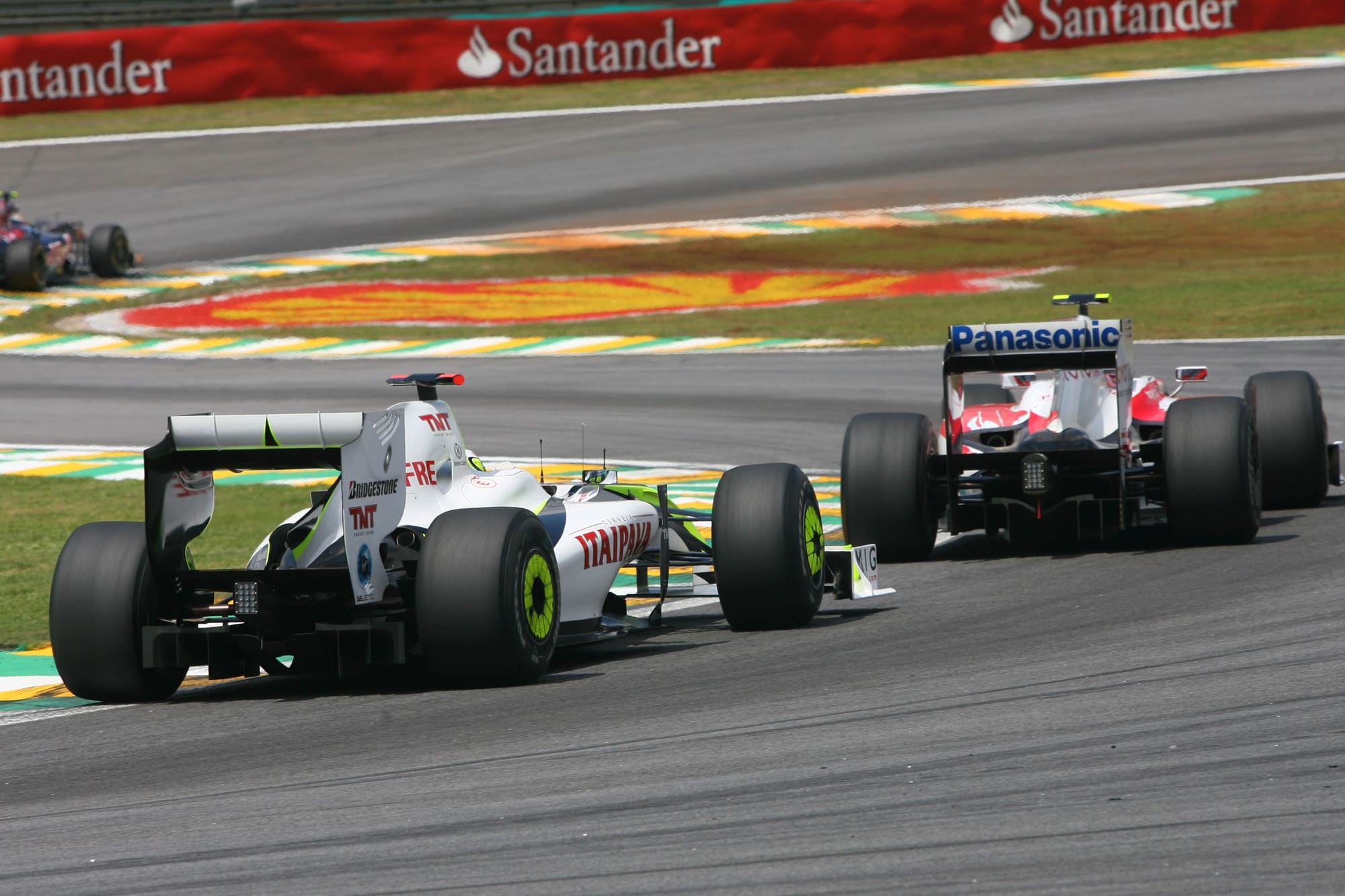
Everyone remembers the glorious tale of Ross Brawn rescuing the Honda F1 team, turning it into Brawn GP, and benefitting from Honda’s massive spending on the new aero rules, the double diffuser trick and McLaren and Ferrari neglecting 2009 development amid their colossal 2008 title scrap, to take a scarcely-believable title double with Jenson Button.
And most probably also remember that the title win was founded on early domination before things got tougher. But how many remember just how bad things got for Button?
After taking six wins from the first seven races, it wasn’t just that Button didn’t win again after Turkey in June - he was only on the podium twice more in the remaining 10 races.
In its only season of existence before turning into Mercedes, Brawn was getting eaten up by bigger-budgeted rivals in the development race and soon pretty much everyone else had a functioning double diffuser, too.
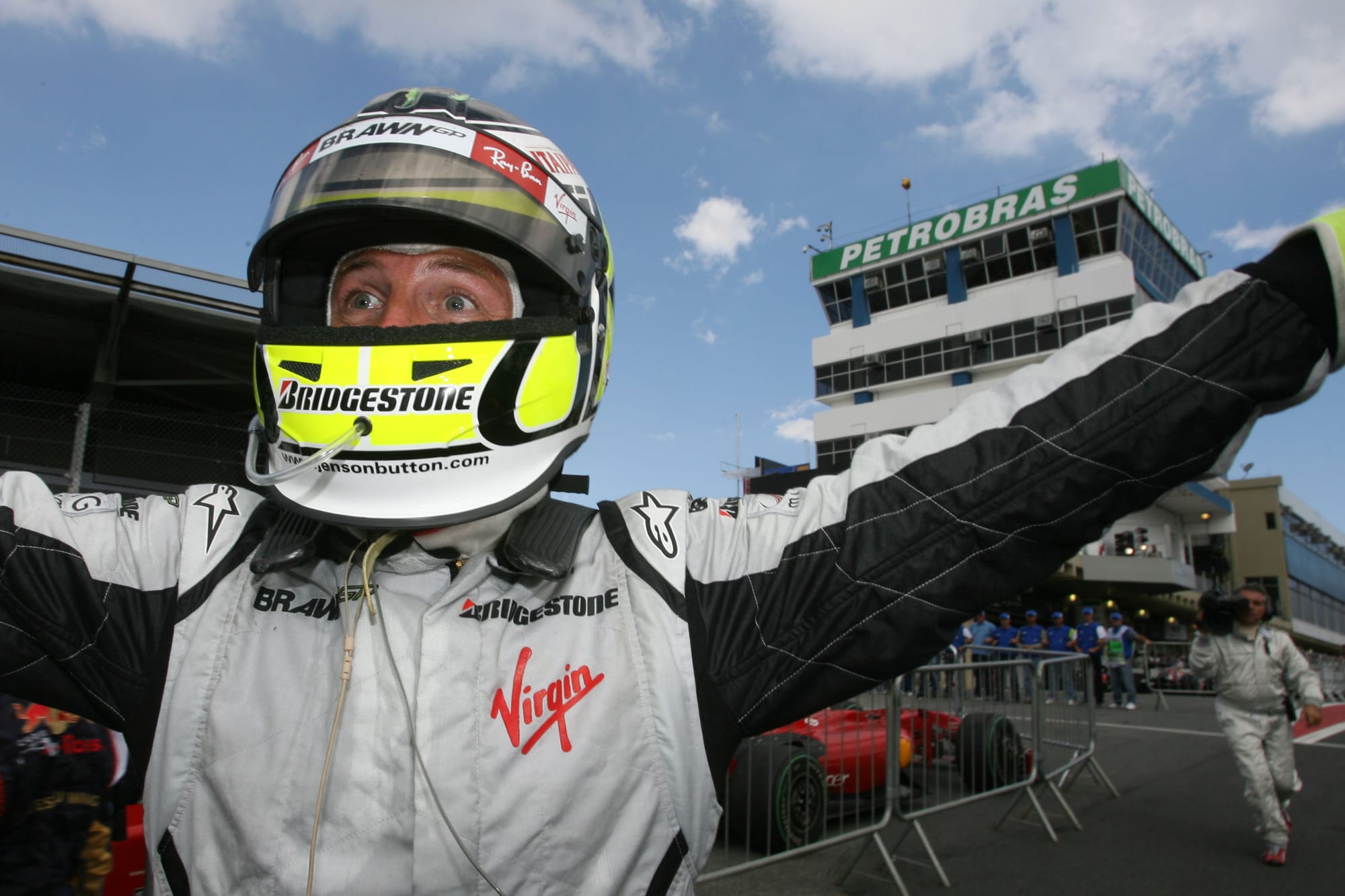
Button has suggested that Brawn actually had more development budget that it was reluctant to spend, but whatever the reason the car certainly wasn’t dominant anymore and Button was having particular angst with tyre warm-up in qualifying, struggling at times to even break into the top 10 on Saturdays.
But there was also a suspicion within the team that Button was simply tightening up as the pressure grew, and that after all the twists of his career so far, the fear of this golden and totally unexpected title opportunity being in sudden jeopardy was weighing heavily and affecting his driving.
After all, his team-mate Rubens Barrichello started winning races in the middle of Button’s wobble, having been blown away in the opening rounds.
Potential rivals taking points off each other helped - Red Bull was rising but both Sebastian Vettel and Mark Webber were winning races, McLaren and Ferrari were popping back to the front but not consistently, and in what became an ultra-close season full of form flips things got so wild we even had Giancarlo Fisichella’s Force India on Belgian Grand Prix pole.
All of which helped Button still get the title over the line with a brilliant 14th-to-fifth charge in Brazil that ensured the Brawn fairytale didn’t turn sour.
2021: Verstappen under pressure
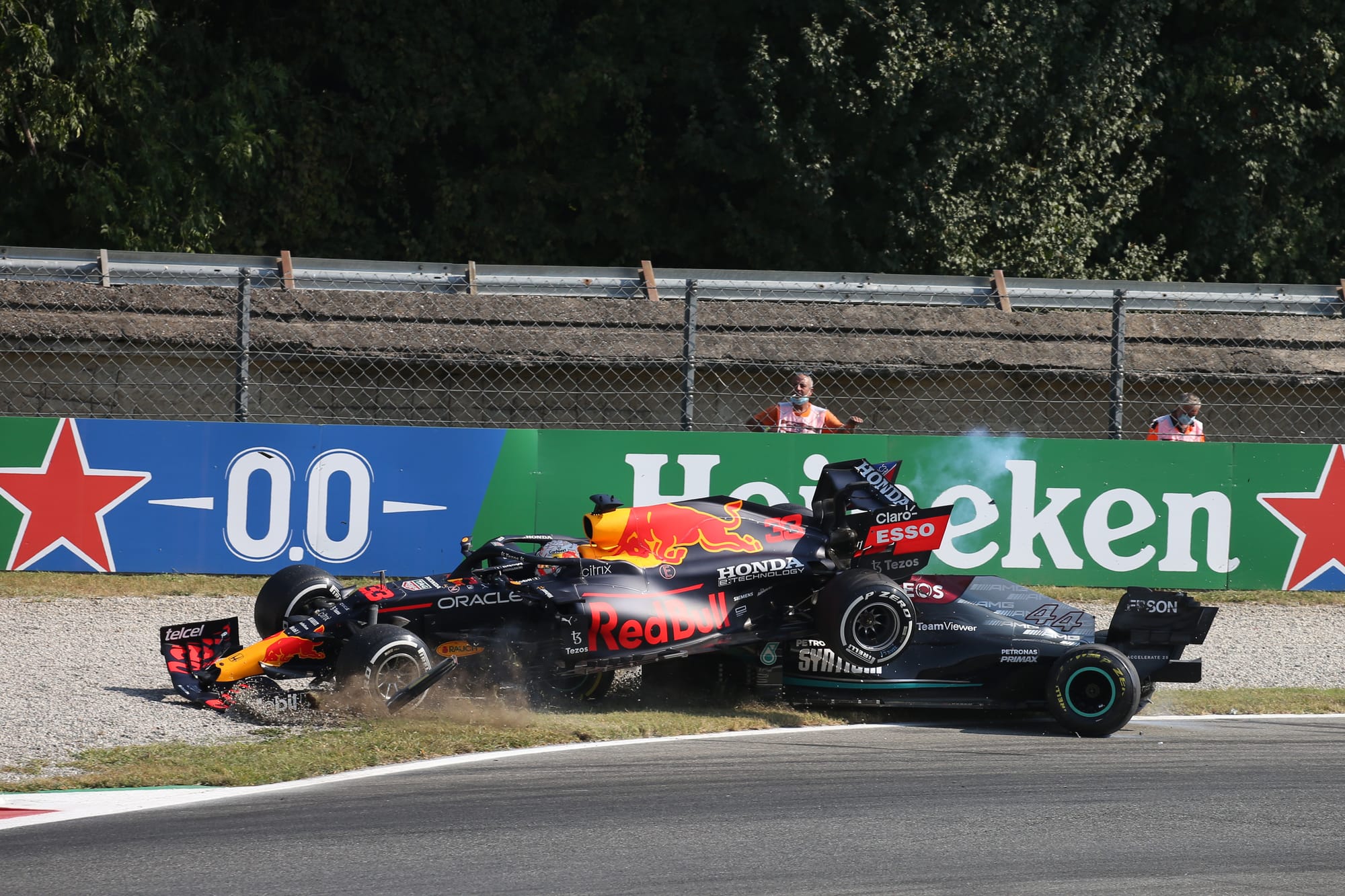
Verstappen was building a very good lead in the 2021 championship until his heavy crash at Silverstone after that controversial clash with title rival Lewis Hamilton.
From that point onwards there were swings back and forth and neither driver took control until Verstappen won back-to-back races in the US and Mexico to open up a 29-point lead with just four races remaining.
Everything was on Verstappen’s side. He had the margin, a car that seemed at least the equal of Hamilton’s Mercedes, and a rival who had only won back-to-back races once all season, back in early May.
Then at the next race in Brazil, Hamilton had a grid penalty for the main grand prix for using a fresh engine - and had to start the sprint race last after being disqualified from qualifying...
Somehow that all turned into the two drivers going into the finale in Abu Dhabi three races later dead level on points.
Hamilton’s fightback in Brazil was aided by it being a sprint weekend which meant he undid a chunk of his grid position damage on Saturday then completed the turnaround on Sunday.
His Mercedes was a rocketship on the Interlagos straights - clearly upsetting Red Bull, and rattling Verstappen.
Somehow Verstappen escaped penalty for taking both drivers into the run-off in that race but it couldn’t stop Hamilton passing him for the win eventually.
That was the first of three victories in a row for Hamilton - a more routine one in Qatar, and then an even more explosive encounter with Verstappen in Saudi Arabia.
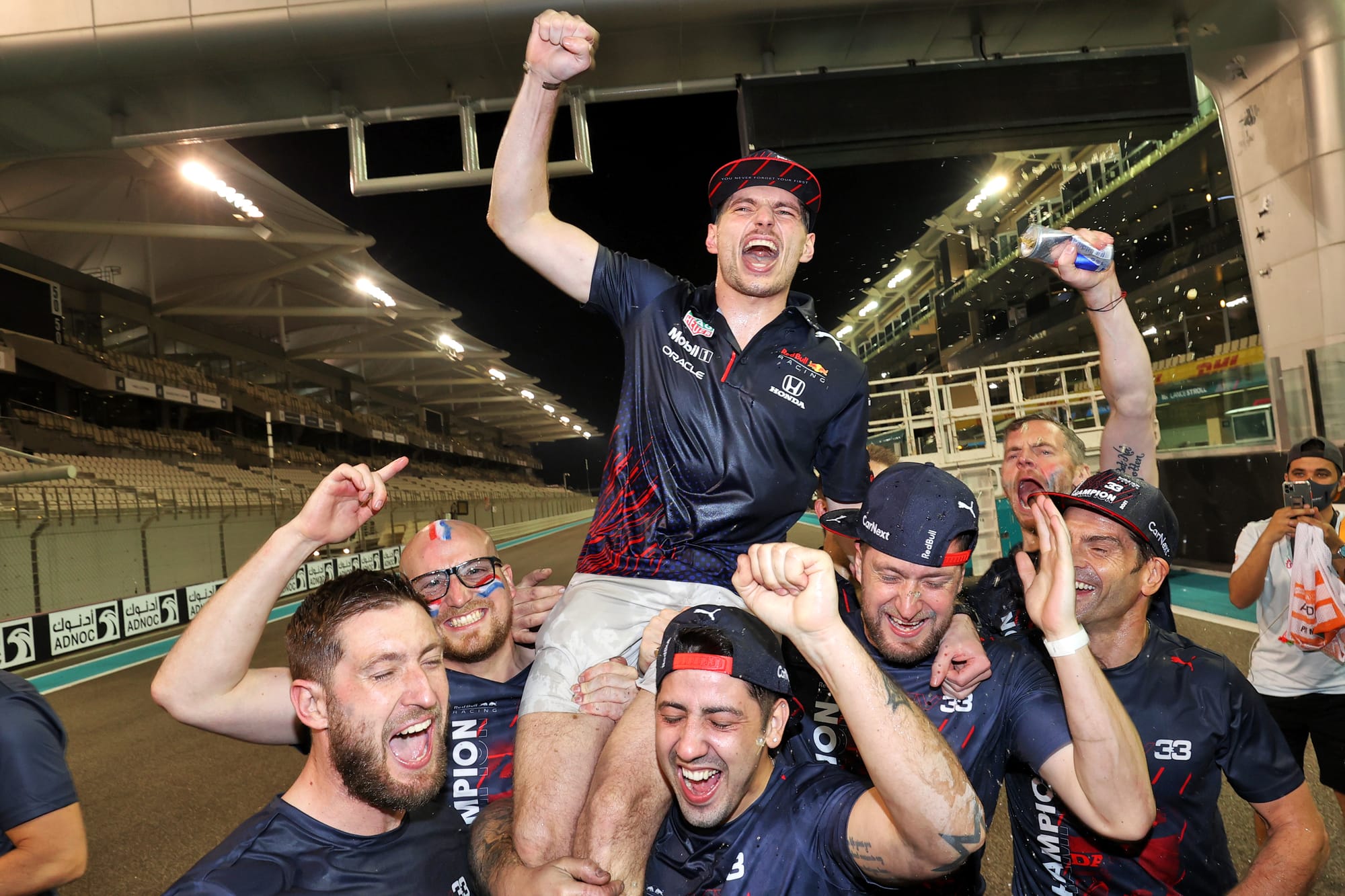
Frustrated after hitting the wall in qualifying and losing pole, Verstappen committed multiple infractions in the Saudi race. He passed Hamilton outside track limits at a red flag restart, and went off-track defending from Hamilton at Turn 1 another time. Then came the famous ‘brake test’ after being ordered to let Hamilton back through following the second offence.
Whether Verstappen truly meant to make Hamilton drive into the back of him or just badly misjudged an attempt to be difficult, only he will ever know the truth.
But, as in Brazil, it couldn’t stop a fired-up Hamilton taking the win anyway. And this was probably the peak of Verstappen having his own small head loss as the pressure of the title battle reached critical mass going into the now-infamous winner-takes-all finale in Abu Dhabi.
1991: Senna’s surprisingly hard title
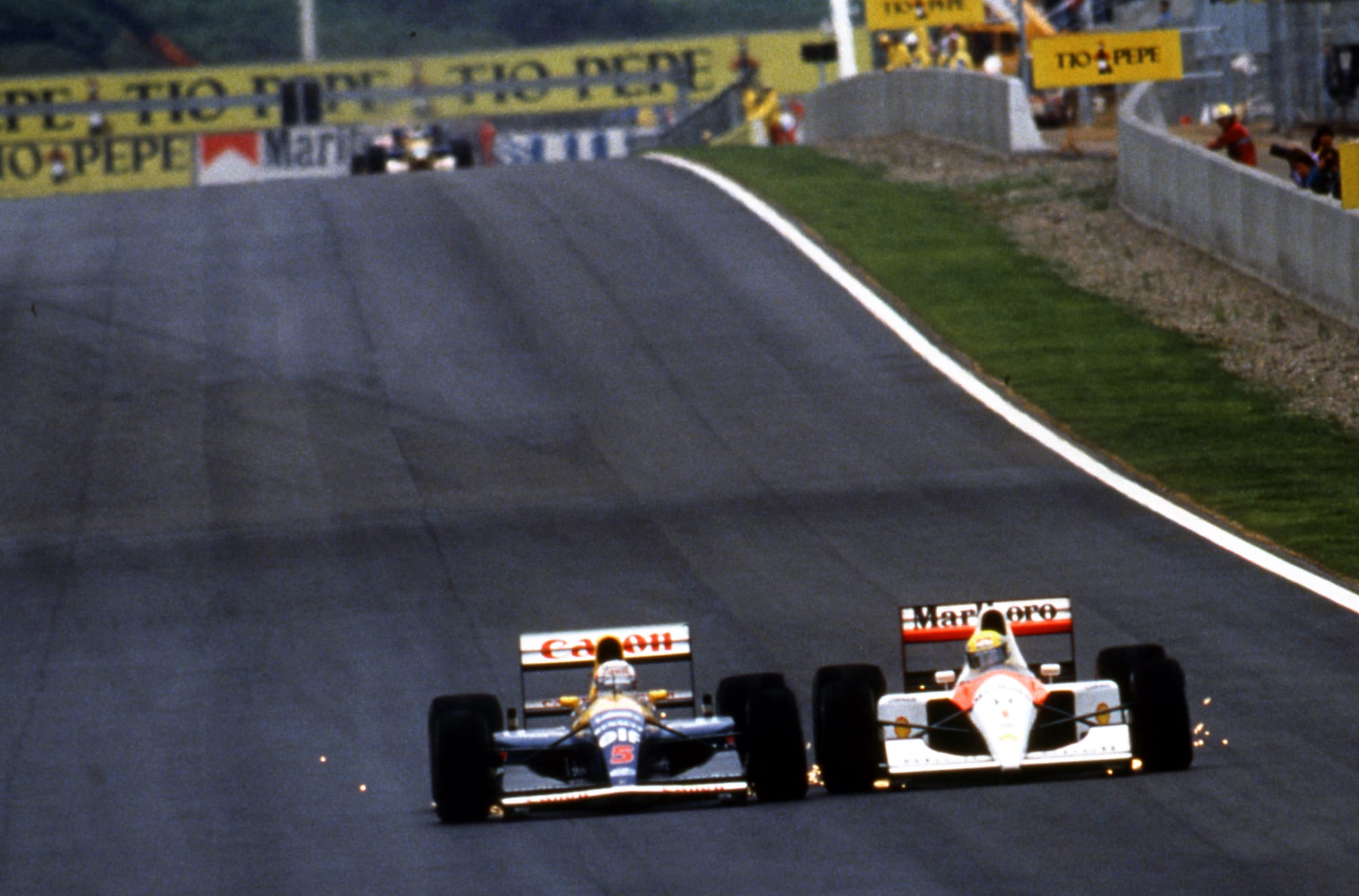
When you think of a hard-fought Ayrton Senna title campaign, you naturally think of various flavours of ferocious antagonism with Alain Prost.
But Senna’s final championship in 1991 was hard-fought in a different way, and looked in severe jeopardy mid-season.
This was the era changeover turning point as McLaren-Honda domination ended and Williams-Renault domination began.
Fortunately for Senna, McLaren and Honda, the ultra-gizmo Williams-Renault was still fragile and being refined, and taking some time for returning lead driver Nigel Mansell to get used to.
That meant Senna opened the year with four straight wins, putting him 29 points clear of second-placed Prost after Monaco and 34 ahead of Williams duo Mansell and Riccardo Patrese at that point.
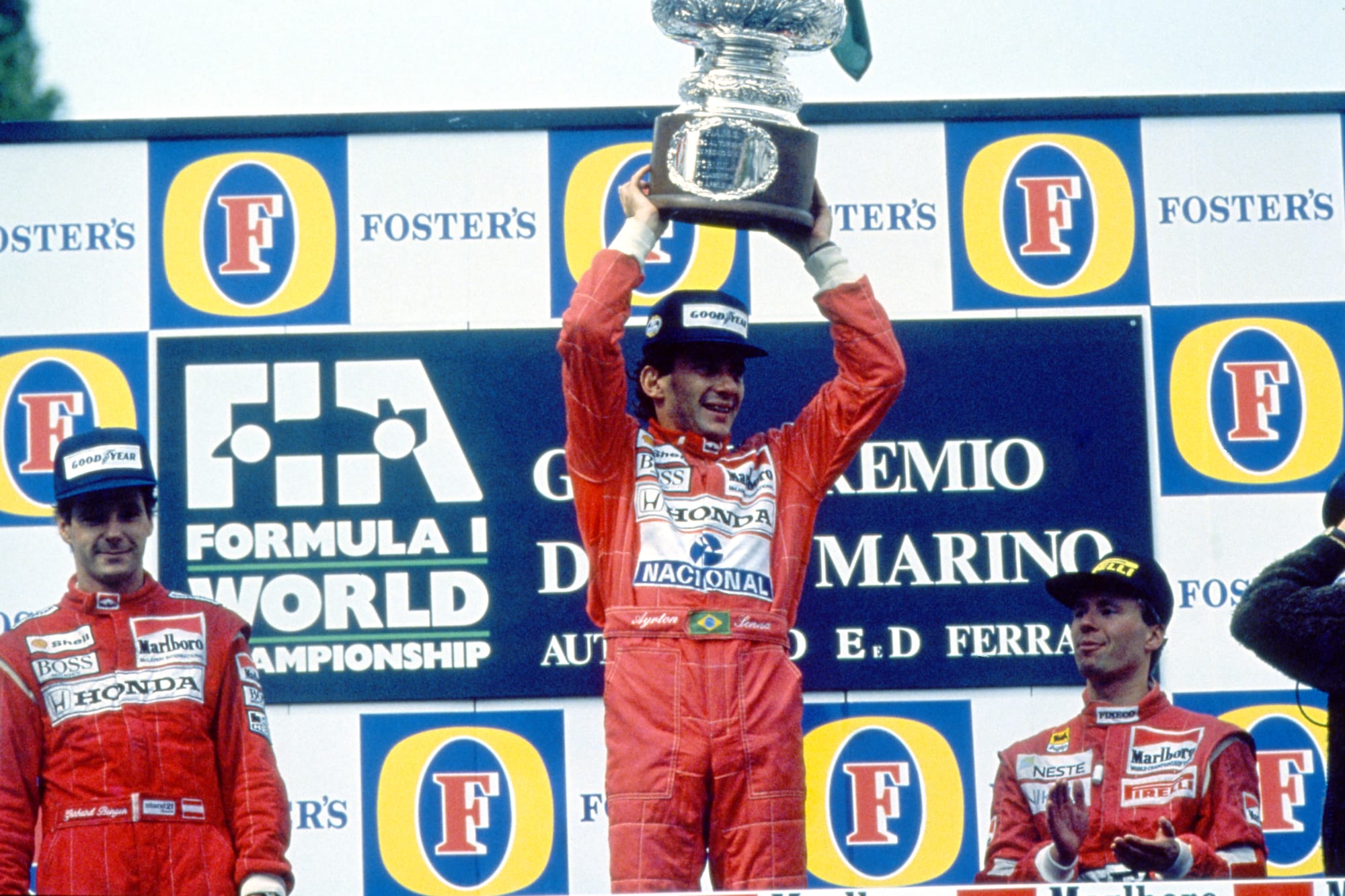
But Senna didn’t win again until he managed to fend off Mansell in Hungary, three months and six rounds later. In that time, mechanical problems, twice running out of fuel at the end of races, straight defeats to faster Williams and Mansell reeling off a victory hat-trick had all combined to bring Senna’s lead down to just eight points over Mansell before the Hungaroring win.
Senna feared that Williams would be unbeatable at the remaining power tracks in particular, but a brilliant performance in Belgium - where he won despite his McLaren’s gearbox ailing and Mansell retired with electrical problems - after that Hungary win steadied things. Mansell losing a wheel in the Portugal pits while on course for victory helped, too.
It ended at Suzuka’s first corner once again. But this time with Mansell crashing out by himself while pushing to keep alive a title bid that by then was pretty much a lost cause.


